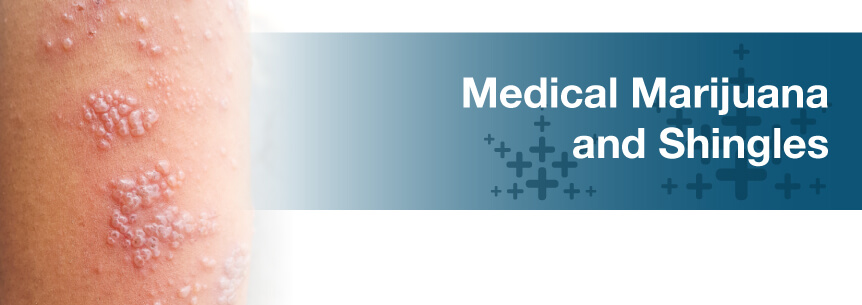
Many have been taking advantage of the therapeutic effects of cannabis for some time now. Now, researchers are studying the benefits of medical marijuana for shingles. Many patients swear by its powerful ability to fight pain and other uncomfortable symptoms.
You have endocannabinoid receptors all over your body. Blockage of these receptors doesn’t occur in the same manner as other types, which allows medical marijuana to provide you with relief from your pain in a way other treatments can’t. Marijuana for shingles also has anti-inflammatory and neuroprotective properties to potentially decrease your pain greatly, along with the other long-term effects shingles causes.
The journal Neuropsychopharmacology published a 2011 study showing medical weed had multifaceted neuroprotective effects. Researchers used animal models in the study and found that the activation of CB1 receptors helped prevent nerve damage.
Find A Doctor Find A Dispensary
Research shows marijuana and shingles treatment can dramatically improve symptoms in patients with shingles. While shingles itself isn’t yet a qualifying condition for medical marijuana, chronic pain is. As most anyone who has had shingles can attest, shingles are painful. The pain can last for days, weeks, months and even years after the shingles rash clears.
Medical cannabis for shingles can:
The research also shows marijuana could be among the most effective treatments for shingles and its symptoms. While it can’t cure shingles, it may offer you a certain amount of relief other medical therapies can’t.
Medical pot is popular for its highly effective analgesic qualities, particularly when it comes to relieving neuropathic pain associated with shingles. A Neurotherapeutics 2009 study showed the THC in cannabis for shingles relieves neuropathic pain when traditional pharmaceuticals have failed.
The Journal of Oral and Facial Pain and Headache conducted a 2015 study showing cannabinoids effectively relieved neuropathic pain that wasn’t responsive to other forms of treatment. This study reviewed numerous randomized and placebo-controlled studies researchers began in the 1950s, which all supported the review’s conclusion. According to the review, other improvements were in the following areas:
Shingles attacks nerve cells, which are part of where the pain comes from. Morphine and other traditional pain relievers have questionable effectiveness since shingles causes damage to the receptors that normally allow regular pain relievers to offer relief. But you have cannabinoid and cannabis receptors throughout your body and shingles doesn’t attack these — this allows medical pot to offer pain relief for shingles patients. Medical cannabis can also decrease inflammation — another main symptom of shingles.
While many medical weed strains are highly effective at treating shingles pain, patients report particularly pleasing results with these strains:
There are various ways to take your medical cannabis for shingles treatment. Some ways include:
Individuals with shingles can benefit from topical cannabis products. You experience shingles pain in specific areas, and that makes topical marijuana medications a great option to target these areas. Medical cannabis topicals come in various forms such as balms, creams, oils and salves that your skin absorbs. These topical products bond to your CB2 receptors once absorbed through your skin and provide you with targeted, localized pain relief.
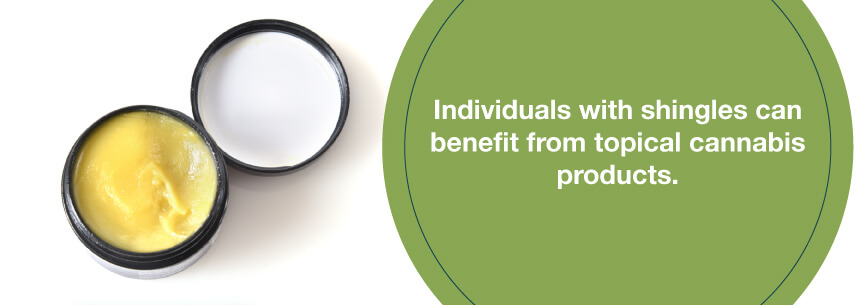
Topicals infused with THC provide you with pain relief without being psychoactive, since they don’t enter your bloodstream. You also get anti-inflammatory properties through CBD-infused topicals to help reduce the inflammation causing your physical rashes and pain.
No matter what method you use for your cannabis shingles treatment, it’s a great choice to relieve the pain and other frustrating symptoms.
Many shingles patients have found relief through cannabis, which is approved for chronic pain in most medical marijuana states. Although shingles doesn’t have a cure and is a painful skin condition, using medical marijuana can significantly reduce pain and relieve the blisters, rash and skin discomfort the disease brings on.
Find a cannabis dispensary or search for a marijuana doctor to get your marijuana recommendation so you, too, can start getting the relief you deserve from this painful condition.
Find A Doctor Find A Dispensary
Shingles is a condition caused by the same virus chickenpox comes from — the varicella-zoster virus. The virus stays in your body after you have chickenpox. It often lies dormant for years without causing any issues. Two out of three individuals won’t develop shingles in their lifetime. Unfortunately, this means that one out of three will, according to the Centers for Disease Control and Prevention.
As you age, however, it can come back as shingles. While it tends to strike individuals older than 50 years old, anyone is at risk if they’ve had the chickenpox. In fact, about half of all shingles cases occur in individuals under the age of 60.
Shingles aren’t something you can catch from another person who has it. However, you can pass the virus on to a person who hasn’t had chickenpox yet if you have a shingles rash. You have to come in contact with the rash directly — you can’t catch it through the air.
Shingles don’t have a cure, but you may fight the virus and prevent lingering pain with medication if treated early.
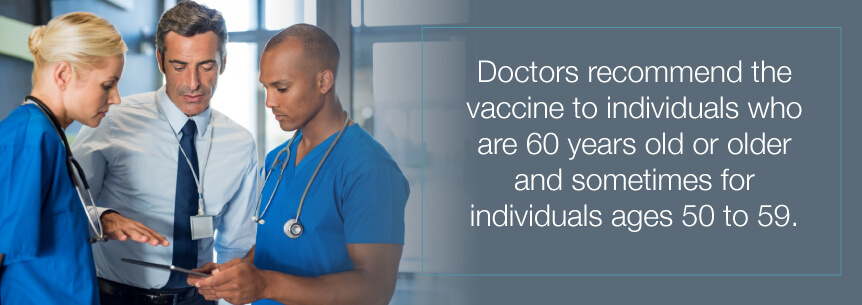
Getting vaccinated can lessen its effects or may prevent shingles altogether. Doctors recommend the vaccine to individuals who are 60 years old or older and sometimes for individuals ages 50 to 59.
While shingles stem from the herpes zoster virus, nobody knows for certain what reactivates the chickenpox virus to cause shingles. Some researchers believe certain conditions could contribute to the reactivation of the virus, since higher incidences of shingles associate with them:
Anyone who has already had chickenpox can get shingles. Around 25 percent of adult individuals, even when healthy, will end up with shingles at some point in their life, typically after they turn 50 years old, reports the National Institute of Neurological Disorders and Stroke. The likelihood of shingles increases with age — therefore, adults over 60 years old are 10 times more likely to get shingles than kids under 10. Those who are aging, have compromised immune systems or who use prednisone or other immunosuppressive medications are at a higher risk of the condition.
Young children who had chickenpox as infants or whose mothers developed chickenpox around five to 21 days before giving birth are at a greater risk of pediatric shingles.
Shingles has been around since the Middle Ages. But doctors often confused shingles with smallpox, since smallpox was prevalent during that time. During the mid-1700s, William Heberden, a scientist, figured out how to tell the difference between smallpox and shingles. The cause of shingles was determined a century later.
In 1831, scientist Richard Bright became the first to discus the origin of shingles. He thought the spinal ganglion, or the dorsal root ganglion, carried the condition. Zostavax, an experimental drug, was developed in 2005 to treat shingles. The FDA approved this drug in 2006 believing it was beneficial.
The symptoms of shingles affect one side of your body in a small section. Symptoms of shingles you may experience include:
The first symptom of the condition is usually pain. This pain can be intense for some people. Depending on where the pain is, you could mistake it for a symptom of problems affecting your lungs, heart or kidneys. You may experience pain with shingles without developing a rash.
While chickenpox occurs all over your body, shingles usually only affect one side of your body. The blisters of shingles tend to happen on your torso on one side of your body, wrapping around your waist. They may show up on one side of your face as well which calls for an immediate visit to the doctor.
Shingles can cause both physical and mental complications:
The most common physical effects of shingles are:
The most common mental effects of shingles are:
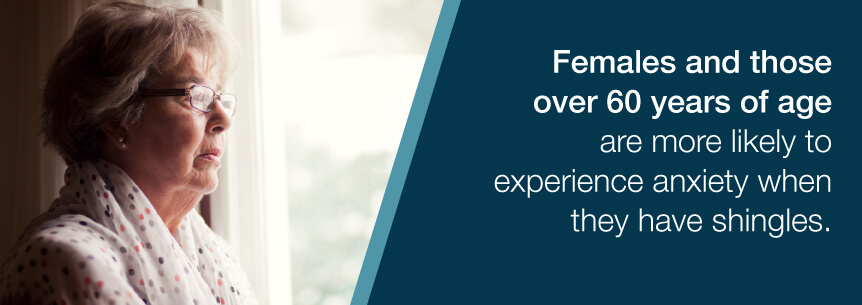
Doctors usually diagnose shingles based on any blisters and rashes along with your pain history in one area of your body. They may take a tissue culture or scraping of your blisters to examine them in the laboratory.
A shingles rash usually clears in a few weeks without treatment. However, dermatologists do urge you to receive treatment since, without it, you’re likely to experience pain, itching, tingling and numbness that potentially lasts for months to years, according to the American Academy of Dermatology. Treatments may include:
If your pain becomes intense, you may require prescription pain medication. Narcotic painkillers do pose the threat of addiction. Other side effects may include:
Your doctor may prescribe antiviral medication immediately after diagnosing you, since these medicines work better the earlier you begin treatment. Some antiviral medications include valacyclovir, famciclovir and acyclovir. These medicines may help to reduce your pain and the length of time your pain lasts. Side effects may include:
Your doctor may give you nerve block injections for intense pain. These injections contain a numbing anesthetic and, in some cases, a corticosteroid. Side effects may include:
To reduce pain and swelling, your doctor may prescribe you corticosteroid pills along with your antiviral medication. This isn’t a common treatment, however, since it could cause your rash to spread. Side effects may include:
Your doctor may prescribe other treatments after your rash clears, such as anesthetic patches and creams, anti-depressants, anti-seizure medications or pain relievers.
Using a wet cold compress on your blisters or taking a cool bath may help relieve your pain and itching. Reducing the stress in your life may help as well.
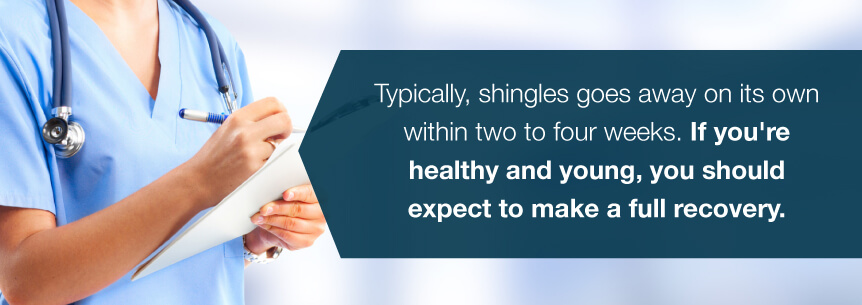
Typically, shingles goes away on its own within two to four weeks. If you’re healthy and young, you should expect to make a full recovery. Around one to four percent of individuals with shingles have complications that require hospitalization. Thirty percent of these individuals have impaired immune systems.


Please allow us to access your location to find local dispensaries.
VIEW ALL DISPENSARIES ➔